Patrick Lenny
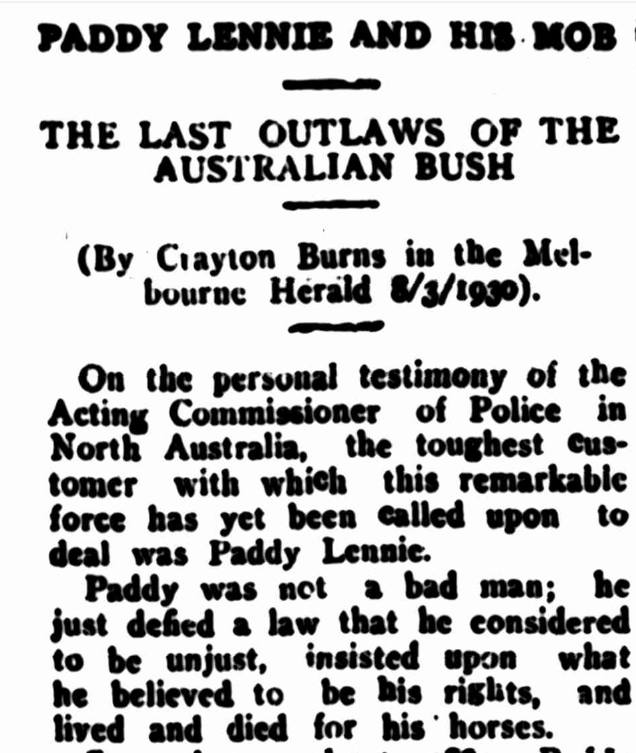
From Waler Data Base @ Facebook. Image: Northern Standard, 27th June, 1930.
Patrick (Paddy) Lenny (Lennie, Lenney). A great bush character. He bred a lot of good horses in the Barkly Tablelands of the Northern Territory and Queensland, although had no title to land.
Was it his real name? No-one knows. Where did he come from? Ireland but not known when he came out here. He turned up in 1880 in the Lorne Creek area near Soudan, an outstation of Alexandria Station, Northern Territory.
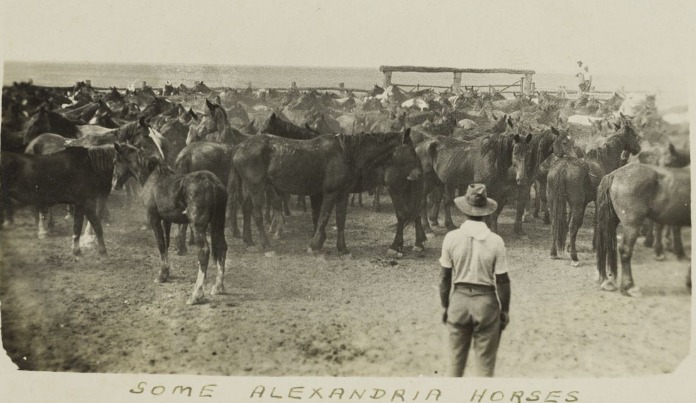
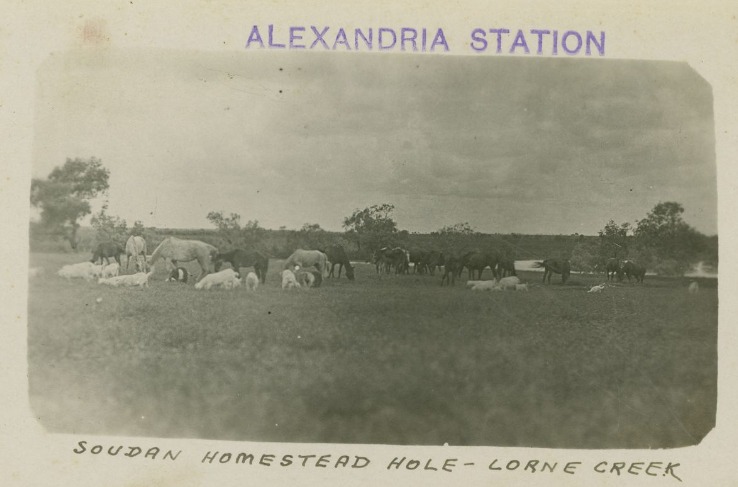
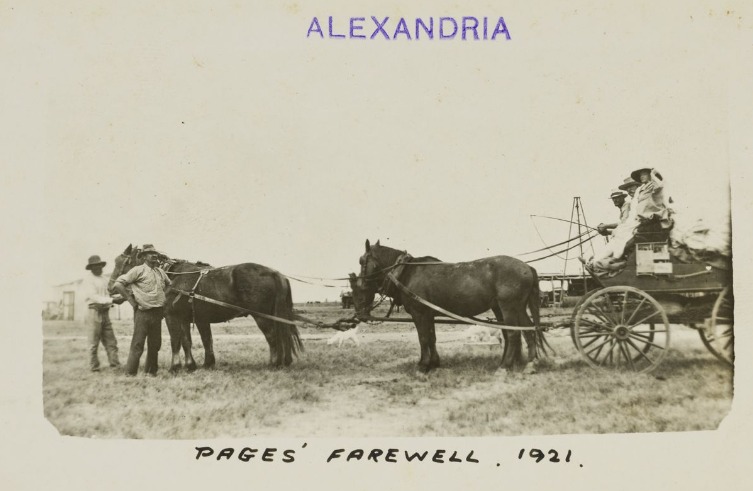
State Library of QLD Images: Horses and goats grazing on the grassy banks of Lorne Creek on Soudan Station, Northern Territory, about 1920; Two men and a woman embarking on a wagon journey, Alexandria Station, Northern Territory, 1921. Dearden Family Papers.
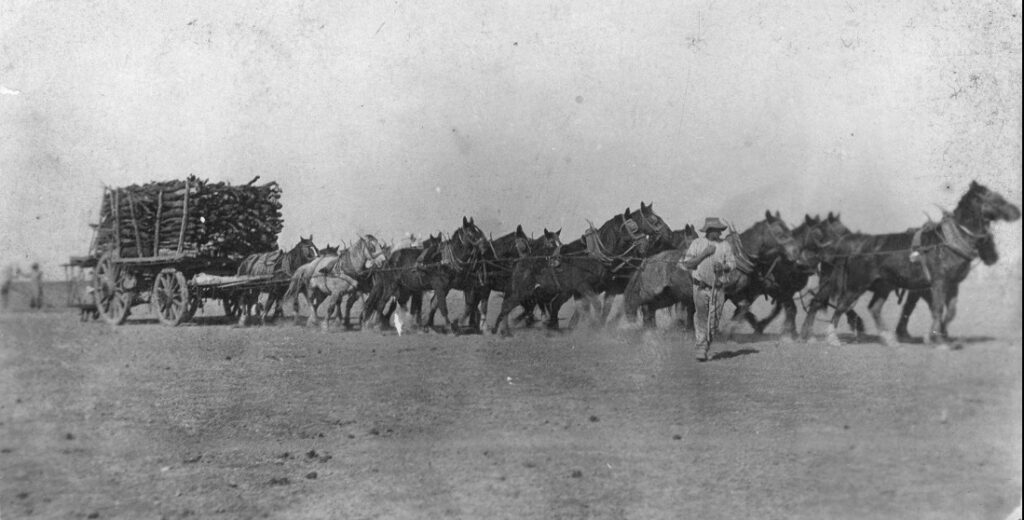
He largely lived between Avon Downs and Alexandria Downs; avoided authorities and was a loner. That attracts police, unfortunately. He took up land in the Ranken River – Lorne Creek area as no white settlers had taken it up – his claim was by occupation, he had no paperwork to prove ownership.
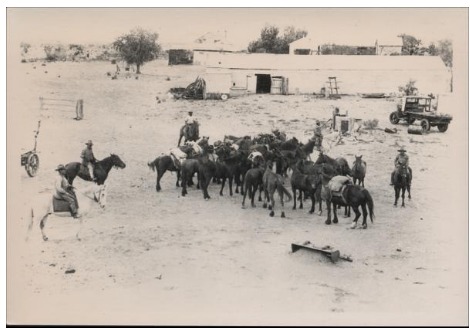
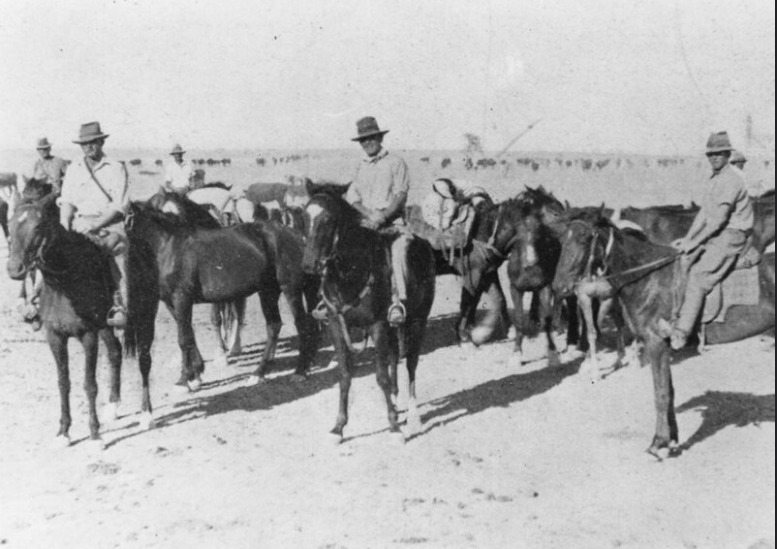
Images: Stock camp horses. Avon Downs, ANU. In an album of Avon Downs photos 1910 – 1960. Undated; Stockmen with packhorses at Avon Downs Station, 1939. State Library Qld.
Patrick got along very well with the local Aboriginals and didn’t molest the women, unlike most men in the bush then. He took thirteen mares and a stallion to his place to start breeding horses suited for stock work. All thirteen mares foaled the first year – every foal was a filly. He got a couple more unrelated stallions.
He loved his horses so much that although he’d intended make a living from them, Patrick found it increasingly hard to part with them. They found ready sales at good prices – but as time went on he stopped selling, becoming so fond of them he called them his children that he wouldn’t sell into slavery. Needless to say, they bred up to several hundred – yet every one would come to a whistle and eat from his hand.
He had no stockyards, no permanent camp – that way he kept clear of troopers. Paddy moved about with his horses – across to Queensland and back into the Territory. He lived off the land, sometimes drovers gave him a bit of flour. He occasionally worked on Avon Downs.
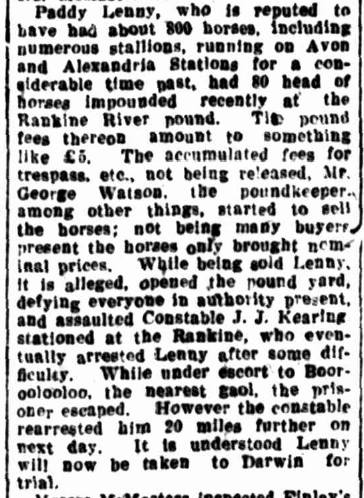
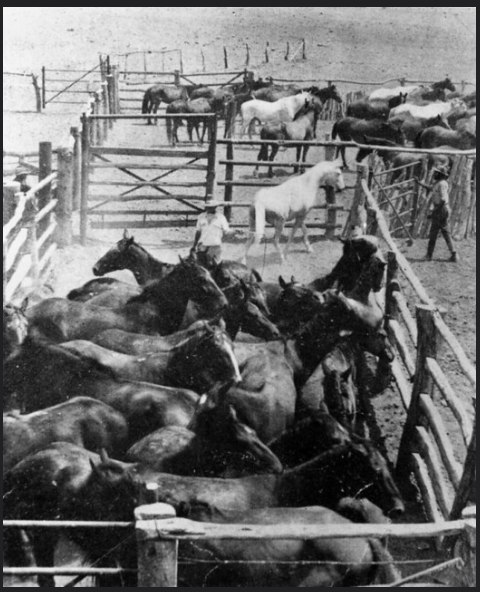
Images: Northern Miner, 30th March, 1915. Kearing had been involved with the death of a prisoner arrested for alleged drunkenness in Melbourne in 1913; Drafting horses at Avon Downs Station, Northern Territory. State Library Qld. Undated.
During WW1 the government sent men to seek him out, but he refused to sell his horses for cannon fodder.
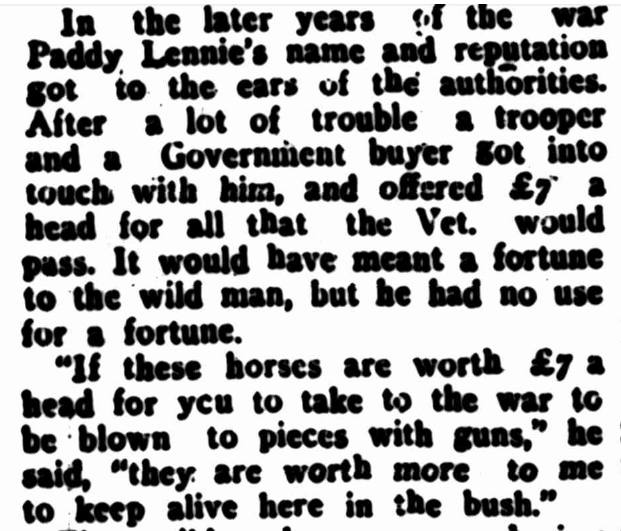
Due to his horses now numbering about 800 and roaming about where pickings were good, several landowners took out trespassing injunctions against him. Boundary fences after all, didn’t exist in many places. But he never appeared in court. Fines for trespass were issued, and went unpaid. Police troopers constantly hunted him. But Paddy and his horses were very good at hide and seek in the Barkly Tablelands.
Image: Northern Standard, 27th June, 1930.
Then, using trackers, police troopers cut off and caught a few hundred of his horses in 1915 and impounded them at Ranken (Rankine) River. There were fees to get them back. But Patrick didn’t pay, so the police auctioned them. One article says it was 80 horses impounded. People turned up to buy them. So did Paddy – un-noticed – he opened a yard and whistled. Some of his horses took off, avoiding people – but Paddy was caught.
Taken to Darwin. Escaped, but caught again. Imprisoned for three months.
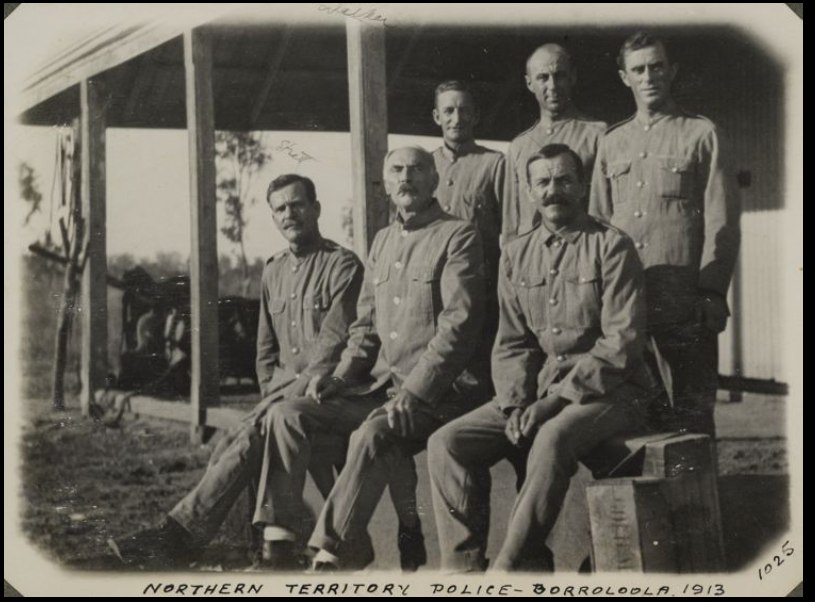
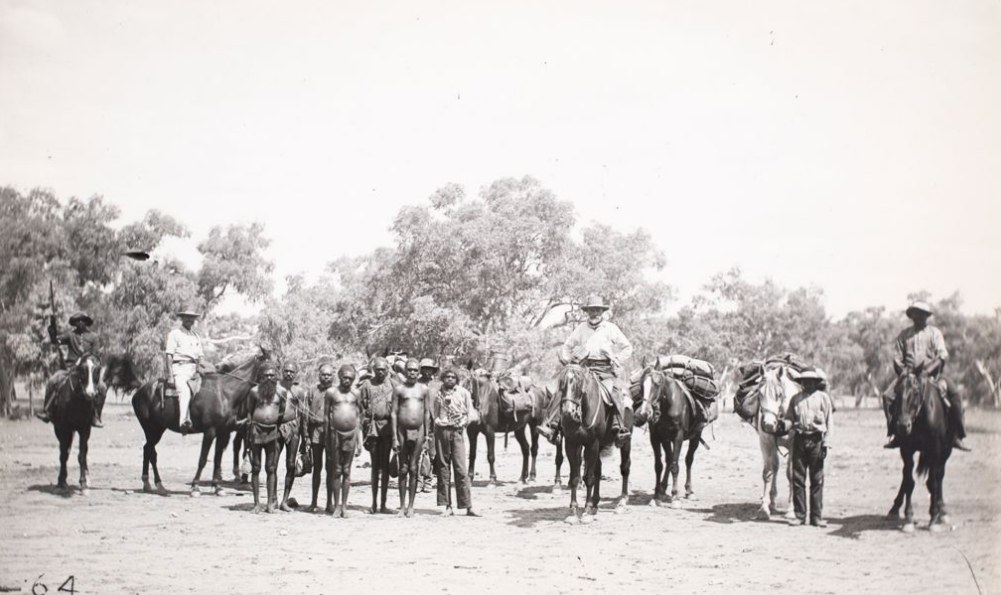
Images: Group portrait of six uniformed police officers taken at Borroloola station, Northern Territory, 1913. Dearden Family Papers State Library Qld; Mounted constables left to right, ?, French, Brookes, ?, ?, with aboriginal prisoners, Heavitree police camp. Territory Stories. These police also hunted Patrick Lenny for trespassing with horses. The police of several stations such as Daley River had horses remarkably like Patrick’s.
On being freed, he went straight back to his horses, walking back to the Ranken area. But he was followed by trackers and police. An old mare was overjoyed to see him, and a foal skipped up to him, but the police caught up with him and charged him with trespass yet again. He was taken back to jail.
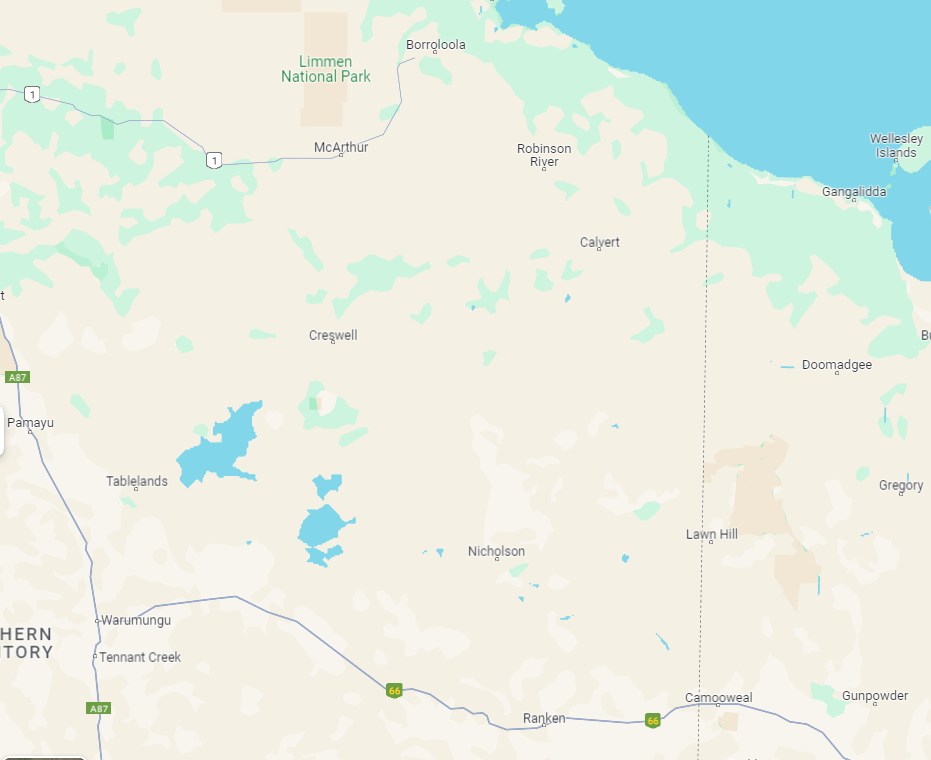
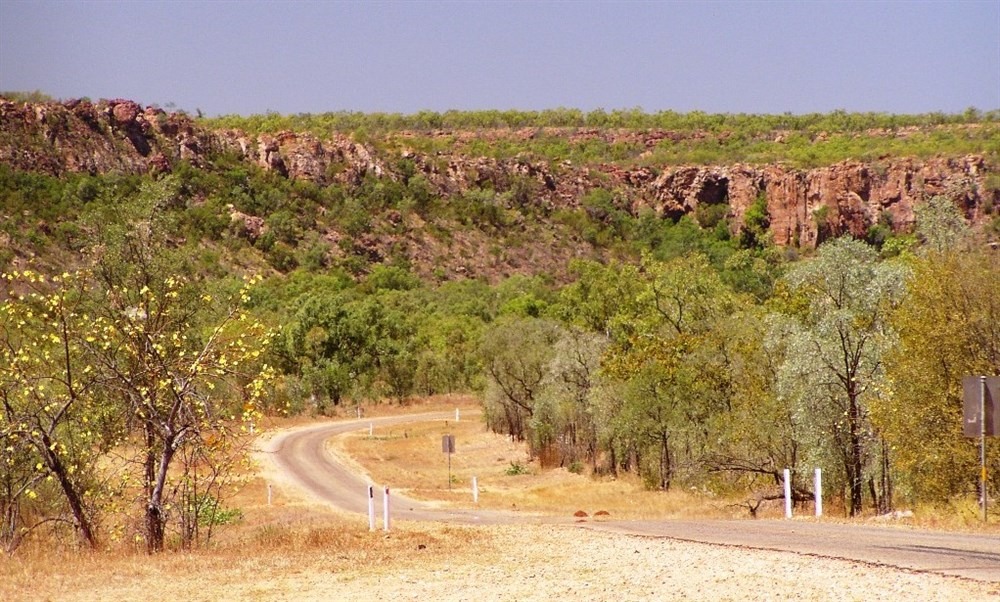
Images: Google maps. Alexandria Station is near where Nicholson is marked. Avon Downs is down near Ranken. Patrick and his horses roamed over the greater area and across to Queensland; Tablelands Highway, by David & Michelle, ExplorOz website.
That time after release, on the way back to his horses, always alone, he caught blackwater fever. He died in a drovers camp at Iron Stone in the Northern Territory, it was 1921; the drovers buried him according to one account; another account says he died in Darwin hospital, and another says it was Townsville hospital. If it was indeed Townsville, then it was Ironstone in Queensland where he got ill. Iron Stone in the NT is to the west, far from his homelands and unlikely he would have gone there, Patrick Lenny was about 57 years old, 6 feet tall, his hair turning grey when he died.
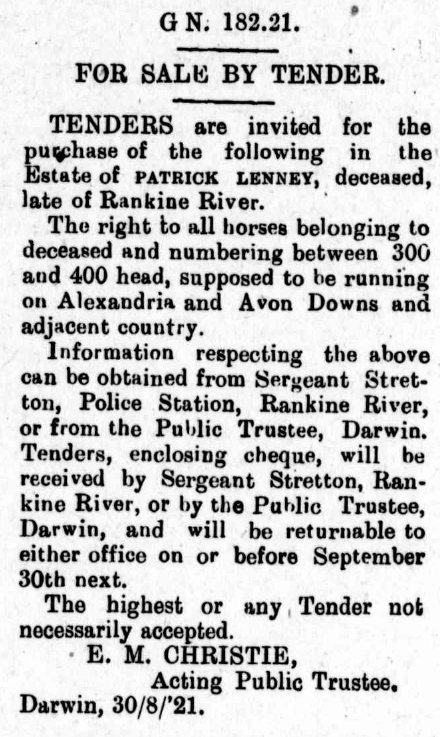
The landowners who sued him for trespass got 100 pounds together to buy his horses from the government, as he had no heirs. They paid Brisbane drovers Kevin Smith and Alex Steel to muster them, paying 5 shillings a head for the first 100, a shilling a head thereafter.
Some went to Avon Downs. Some went to Alexandria Station. Four hundred went to auction and got good prices. The men shot a further 1,400, paid a shilling per head by the station owners. Whether all were Patrick’s is unknown; his were branded to distinguish them from unclaimed brumbies, they were paid by presenting scalps.
Image: Northern Territory Times & Gazette, 17th September, 1921.

No photos of Patrick exist that I can find, some photos found of the country and horses of the time to fill out his story. The blood of his horses was in those of the area then and perhaps even now.
Used old newspaper accounts for his story; any errors happily corrected. Please be aware there are images of Aboriginal people of the past who have passed on, which may cause distress to relatives.